When I began painting I realized that there are a plethora of choices out there, so what watercolor brushes do I need exactly? It can be a confusing and expensive process to work this out. Apart from the issue of size and shape, there is also hair type to consider. Should you throw money and caution to the wind and go for a super expensive Kolinsky sable? What about a synthetic hair brush? Will it do the job just as well?
- How To Choose Watercolor Brushes
- Watercolor Brush Types
- Detail Brush: Usefulness Rating 2.5/10
- Fan Brush: Usefulness Rating 3/10
- Rigger Brush: Usefulness Rating 5/10
- Swordliner or Dagger Brush: Usefulness Rating 5.5/10
- Hake Brush: Usefulness Rating 6/10
- Chinese/Bamboo Brush: Usefulness Rating 6.5/10
- Flat Brush: Usefulness Rating 8/10
- Mop Brush: Usefulness Rating 8/10
- Round Brush: Usefulness Rating 10/10
- Synthetic Vs Natural Watercolour Brushes
- How Much Money Should I Spend On Watercolor Brushes?
- Brush Sizes
- What Are The Essential Watercolor Brushes?
- How Can I Tell If a Watercolor Brush Is Any Good?
- Watercolor Brush Alternatives
- Taking Care of Your Brushes
How To Choose Watercolor Brushes
When choosing watercolor brushes, the first question to ask yourself is what kind of painter are you, or want to be? Style and subject matter is big factor determining brush choice. Do you admire the works of artists that paint in broad impressionistic strokes or are you aiming for photo realism? Maybe you want to include elements of both. A portrait painter may rely much more heavily upon a round brush than, a loose landscape painter.
As a general rule, small pointy brushes tend to encourage a focus on detail and for this reason, I tend to avoid them as I am trying to develop a freer looser style. The exception to that rule is that I may add some small foreground details as final touches at the very end of a painting. Whatever style of painting you prefer, you will almost certainly need to paint large washes at some point and for that you will definitely need a larger brush e.g a 3/4″ flat brush.
I have acquired many brushes over the years, I even have brushes that are close to forty years old, I never throw them away because even a tatty or threadbare brush can have a use. Creating randomness in your textures for instance or adding spots of masking fluid. Masking fluid is a sure fire way to ruin a brush, so you don’t want to use a good one.
Watercolor Brush Types
Below, I’ve listed the main brushes that are used in watercolor painting. I’ve listed them in order of usefulness but don’t take that too literally as this does largely reflect my own personal preferences. So feel free to disagree and experiment. You may find a brush very useful which I would never dream of using myself.
Detail Brush: Usefulness Rating 2.5/10
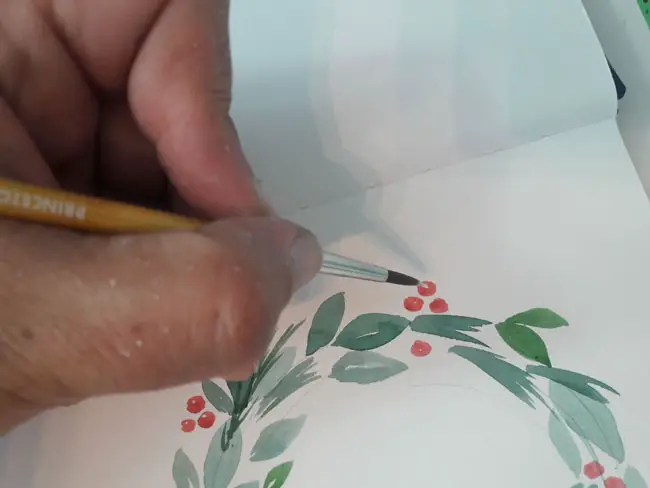
Mainly used for painting tiny details. It is very similar to a small round brush but with shorter hairs. I own one but rarely use it.
My recommendation: Detail Paint Brushes Set From Amazon
Fan Brush: Usefulness Rating 3/10
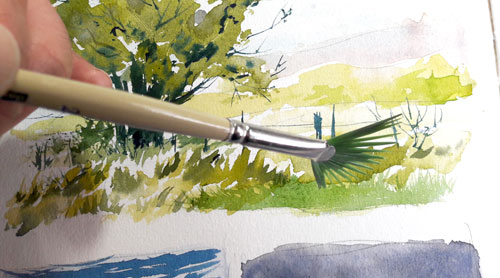
The fan brush is a bit of one trick pony to be honest but still worth having in your arsenal. It’s mainly used for painting grass and can also be good for creating tree foliage and other similar textural effects .
My Recommendation: da Vinci Watercolor Series 1385 VarioTip Fan Brush From Amazon.
Rigger Brush: Usefulness Rating 5/10
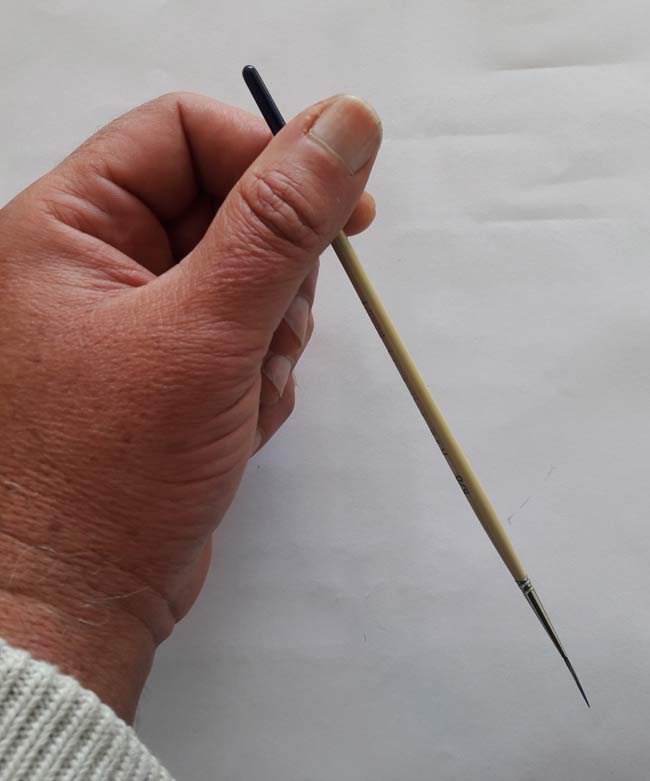
Rigger brushes are used for painting very thin lines. (Such as the rigging on ships, hence the name). Even if you’re not into nautical art, Riggers are also really useful for painting twigs and branches and any thin lines such as power lines or blades of grass, fur etc.
My Recommendation: Winsor & Newton Cotman Water Color Series 333 Short Handle Synthetic Rigger #1 From Amazon
Swordliner or Dagger Brush: Usefulness Rating 5.5/10

A Swordliner is so called because of it’s long tapering sword like appearance. It produces a thin line like a Rigger but it has the ability to produce much longer livelier strokes that taper beautifully from thick to thin. My Swordliner has largely replaced the Rigger for me. I love the way it facilitates the painting of loose natural looking tree branches and long swaying blades of grass. Like a Rigger, holding it by the handle tip and flicking it from the wrist works way better than trying to control it by gripping tightly near the ferrule. But it takes a bit of confidence and practice to approach it in this way. The dagger brush is very similar to the Swordliner but as the name would suggest, it is shorter and more… well, dagger like. The Dagger brush can be used in a similar way to the Swordliner but is easier to control. It can be used for sketching as well as producing thin lines and is great for painting flower petals. I also like to use it for painting distant small figures.
My Recommendations: Princeton Artist Brush, Synthetic Bristle 6250Dg Dagger Striper and the Mack Pinstriping Brush Size 0 Fine From Amazon
Hake Brush: Usefulness Rating 6/10

Ron Ranson’s book “Big Brush Watercolor” introduced me to the Hake when I was just getting started and I find it to be a very useful brush, if a little difficult to control. The Hake is an oriental style brush, with a long flat wooden handle. It is often made from goat hair. The Hake holds a lot of water, therefore, it’s great for washes and painting cloudy skies. I also use it a lot for painting foliage. This floppy haired brush can be bent into different shapes, adding an element of randomness that’s very useful for painting natural features. I don’t love it quite as much as much as Ron did but it definitely has a permanent place in my brush collection and another great thing. They are cheap!
My Recommendation: Winsor & Newton Hake Wide Flat Wood Handle Brush-2 From Amazon.
Chinese/Bamboo Brush: Usefulness Rating 6.5/10
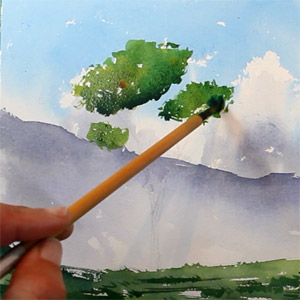
I have a cheap Bamboo brush, which is made from some unspecified natural hair. It cost me less than $5 and I love it and use it a lot. I often use it in combination with a hake on tree foliage, grass, rock textures, bark textures and skies. It’s much more controllable than a hake but doesn’t hold anywhere near as much water which can be a good thing or a bad thing depending upon the situation. Someone who paints in a very controlled tight style might not enjoy using this brush as much as I do, as it’s not springy at all and doesn’t retain a sharp point.
My Recommendation: Winsor & Newton No.6 Bamboo Brush From Amazon
Flat Brush: Usefulness Rating 8/10
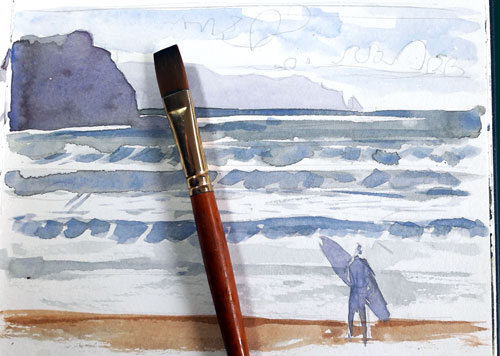
Flat brushes are perfect for painting all types of washes. The flat tip of the brush is also very useful for painting objects such as tree trunks, houses, boats and fence posts. I like to use a flat brush for nice crisp hard edges such as mountain ranges etc. I also find that a small flat brush works better than a round brush for painting figures.
My Recommendation: Mimik synthetic 3/4″ flat brush From Amazon
Mop Brush: Usefulness Rating 8/10

A lovely fat brush, great for painting fast and loose. The ability of a mop brush to retain a large amount of water and form a good point makes it perfect for painting large washes and also for painting smaller details.
My Recommendation: Princeton Artist Neptune, Watercolor Series 4750, Quill Synthetic Squirrel, Size 4 From Amazon
Round Brush: Usefulness Rating 10/10
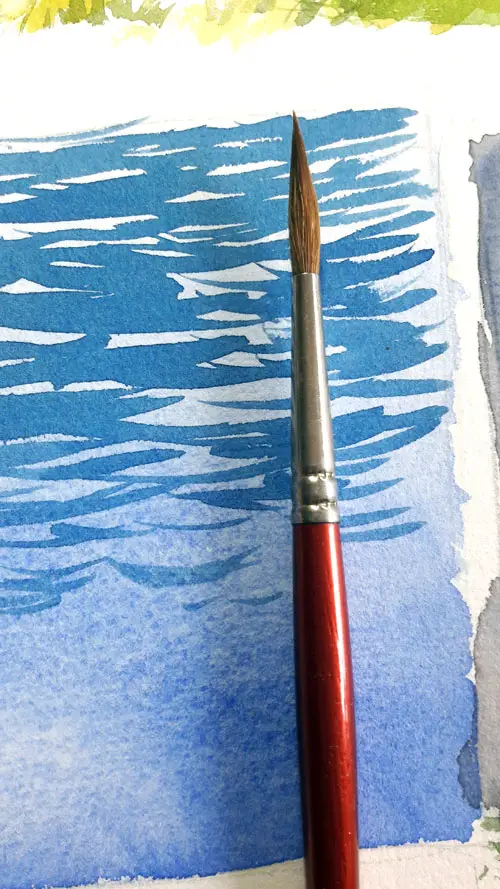
Every watercolor painter needs to have a few good round brushes on hand, it is very versatile and probably the most commonly used brush in watercolor painting. It can be used for painting large wash areas and broad strokes. It should have the ability to form a good point and enable you to use it for finer detail if needed. It is great for painting dry brush style foliage by dragging it on it’s side.
My Recommendation: Da Vinci Brush, Round Size 2 From Amazon
Synthetic Vs Natural Watercolour Brushes
Most watercolor artists will tell you that Kolinsky sable brushes are “The best of the best”. Certainly they are the most expensive but what do they actually mean by best? Kolinsky Sable is harvested from the winter tail of a rare male weasel only found in the remote hinterlands of Siberia You couldn’t make this stuff up could you? Kolinsky hair is prized for it’s springiness and ability to form a sharp point. The hair is difficult to obtain therefore, unsurprisingly it’s very expensive. I have a couple of Winsor and Newton series 7 Kolinsky sable brushes and yes they are nice to use. However, I don’t think that the difference in the painting experience or end result is anything like the difference between using a cheap wood pulp paper and a 100% cotton paper.
Ranking a bit below Kolinsky Sable, is Red sable. Springy but not quite as pointy. Other natural options are squirrel hair and goat hair. These tend to be somewhat floppy and not so good for round brushes but do work well for Hake and Mop brushes.
Synthetic fibre brushes hold a good point but tend not to retain as much water. All things considered. A decent synthetic hair brush is fine for me and fine for 99.9% of beginner painters. Synthetic fibres do vary considerably in quality though. Another reasonably priced option is a natural/synthetic blend.
How Much Money Should I Spend On Watercolor Brushes?
My advice to a budding watercolor artist would be to allocate your funds in the following order of importance. Watercolor paper first then paint, then consider brush quality last of all. That’s not to say you should buy dollar store brushes that you might give to a four year old. I would go for reasonable quality medium sized brushes in the $5 to $50 range. I personally find Cotman and Pro-Arte Prolene to be great synthetic brushes very reasonably priced. Escoda brushes also come highly recommended by many artists. Other good brands of brush are Raphael, Winsor & Newton, Da Vinci.
Brush Sizes
Brushes range in size from 0000 to 50. You can’t effectively paint a large wash with a size 0000 brush and as you might expect larger brush = larger price. Remember, the larger your canvas, the larger your brush needs to be. Most artists tend to find a size of paper they are comfortable working with and stay with that, at least for a while. You don’t need to buy every brush type in every size.
What Are The Essential Watercolor Brushes?
For the bare minimum brush set that will give you the most utility for the least amount of money I would go for the following three types of brush.
A medium size round brush. i.e, a no.6 to no.8.
A medium flat brush 0.5 inch to one inch.
A Wash brush of some kind. Possibly a large squirrel hair mop brush or a Medium to large goat hair Hake. Mop brushes are lovely and expressive and are ideal for washes because they hold a large amount of water but tend to be expensive. Around $150 – $200 for the larger sizes but one should last you a lifetime. Hake brushes are very cheap, around $5 – $10 at most but they do have a tendency to shed hair for quite a while until they’re fully broken in. Avoid the really poor quality hakes that have the hairs sandwiched between pieces of cardboard.
How Can I Tell If a Watercolor Brush Is Any Good?
Generally speaking you tend to get what you pay for, where brushes are concerned but if you’re going to go for cheaper brands, it can help to know what to avoid. The best brushes are handmade. They have plenty of hair beneath the ferrule (Unfortunately, of course that’s not going to be visible). The ferrule (The metal bit) will be made of or plated with nickel or other non-rusting metal. The hair is never cut at the top, always from the base.
It can be difficult to assess the quality of a watercolor brush just by looking at it in the store. A brush that has a beautiful pointed tip can turn into a clumpy mess the first time it’s used. Once you’ve used it, of course, it’s too late. Brand new brushes are usually dipped in gum arabic and shaped to a nice point before they get to the store.
Here are the tests I do. By the way I accept no responsibility for you getting into trouble with irate art store owners for doing this! When I examine a brush, I gently bend the brush hairs and roll them between my fingertips which removes a lot of the gum arabic, breaking it up into fine dust. Then I take a look a close look at how much the hairs spread out. If the hair fans out a small amount evenly, that’s o.k. but if it has a tendency to instantly split into separate clumps that’s a big red flag, I’ll just move on to the next one. Confession! Sorry if you think this is gross but If it passes the first test and I can get away without being seen, I’ll literally lick the hairs back into shape and see if it holds. If it instantly splays out again. Reject!. Like I said sorry, but not sorry! To go to my nearest art supplies shop is a 160km round trip. I don’t want to get home and regret my brush choice. It’s surprising how much variation there can be in two supposedly identical brand new brushes.
Look for a ferrule that doesn’t have a seam, as the seam will allow water to enter over time. The ferrule should be tightly crimped on to the handle. The handle should be varnished so that the wood doesn’t swell and contract as it wets and dries. Make sure the brush feels comfortable to hold.
Watercolor Brush Alternatives
Watercolor Pencils
Watercolor pencils give you all the accuracy of a pencil but also allow you to activate the pigment with water and blend it in the same way as watercolor paint does.
My Recommendation: Faber Castell 12 Watercolor Pencils in Tin Box Albrecht Durer Magnus From Amazon.
Using Oil Painting Brushes With Watercolors
The stiff bristles of an oil painting brush such as a filbert can be used in watercolor to lift out areas of color. This can be a useful technique at times but requires a sturdy cotton paper in order to avoid damaging the painting surface.
My Recommendation: Winsor & Newton Artists’ Oil Brush – Filbert (Long Handle) – Size #2 From Amazon.
Brush Pens, Refillable and Non-Refillable
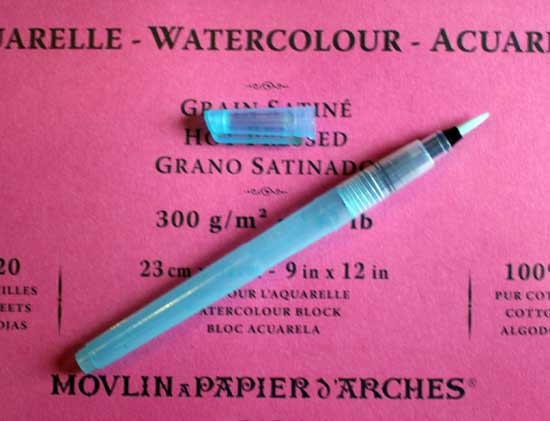
Very similar to regular fibre tip pens but with a softer nylon tip and they work with watercolor paint. Some are pre-filled with paint other types allow you to fill with water or diluted paint and enable you to pen-like marks. These are very useful for plein-air sketching where you might not want to carry a lot of water with you and also can be used for calligraphy.
My Recommendations: Pentel Arts Aquash Water Brush Assorted Tips, Pack of 3 and ARTEZA Real Brush Pens. From Amazon
Toothbrush

This is isn’t really an alternative to traditional brush but an old toothbrush can be used to create interesting spatter effects and granular textures such as foreground sand and rock textures.
Plastic Bag
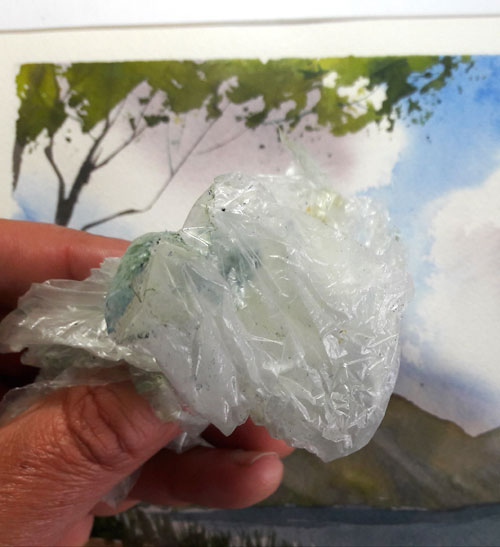
Dipping a scrunched up plastic bag into paint and dabbing it on paper can create great natural looking tree foliage and texture effects.
Spray Bottle
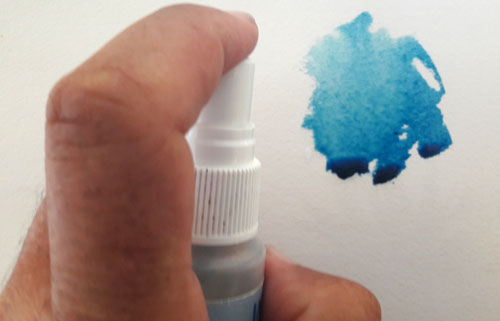
I find a small misting spray bottle to be indispensible. Spraying water on to a drying flat wash can create interesting spatter and granular effects. I find it particularly useful when painting skies to spray areas with clean water. This is a great way to create realistic looking clouds which tend to have a mixture of hard and soft edges. I also use it to spray on to my paint pans and drying palette to reactivate old paint. This reduces the need to mash a wet brush into a blob of drying paint, as that tends to ruin your brushes very quickly.
My Recommendation: Fantasea Fine Mist Spray Bottle. From Amazon
Sponges

Sponges natural or artificial have been used by watercolor artists for years. They are often used to lift color out of washes to create clouds.
My Recommendation: Natural Ocean Artist Sponges From Amazon
Palette Knives
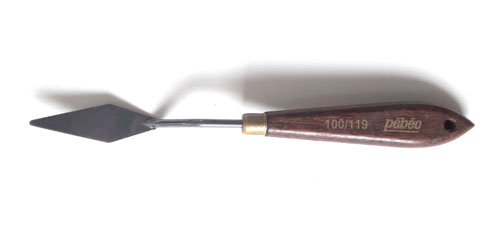
Palette knives are traditionally used by oil painters but there is no reason why they cannot be used for watercolors too. Indeed many watercolor painters do use them. I use my palette knife for scratching out thin lines and for creating texture effects.
My Recommendation: PEBEO 1002 Classic Painting Knife From Amazon.
Taking Care of Your Brushes
After use, I always clean my brushes by swirling them in a big jam jar of fresh warm (Not hot) water. I shake off the excess water and I dry them by gently rolling them on a soft cloth or soft paper towel making sure to get all the paint residue out of the brush where the hair meets the ferrule as paint can wick up inside there and cause the hairs to splay out over time. I reshape the points of my round pointy brushes and put them handle downwards in a large dry jar. Never store them upside down on their bristles, as they will dry bent out of shape and never really come right again.
If you need some help trying to select appropriate art supplies for your needs I’ve put together a list of my recommended art supplies. Which includes many of the brushes that I currently use myself.
That’s all for now. Happy Painting!
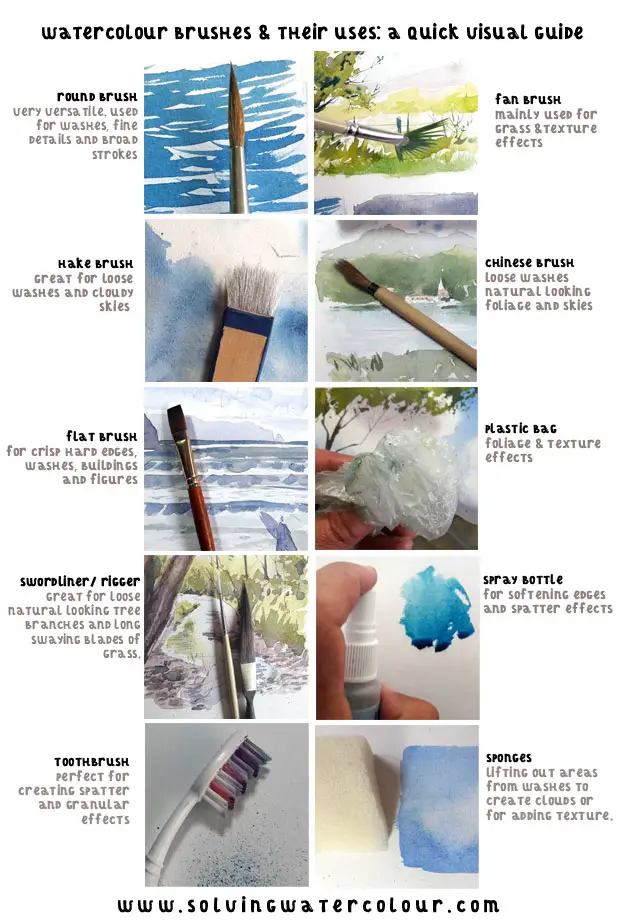
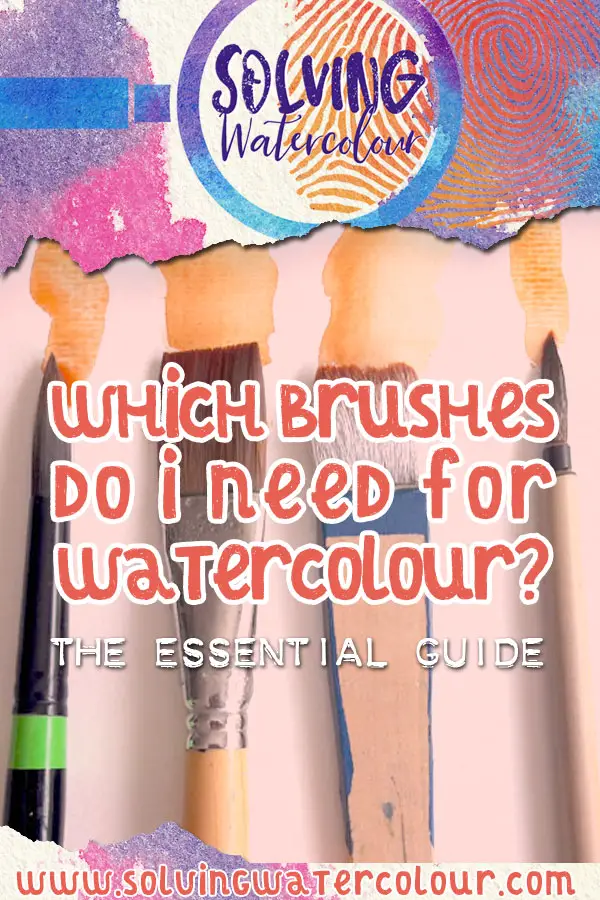

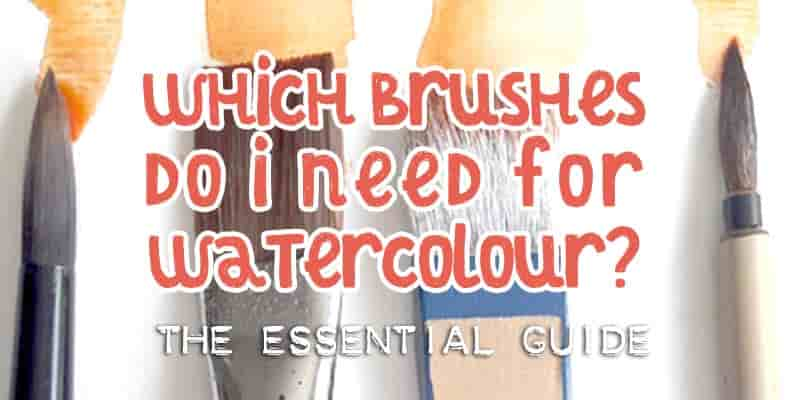
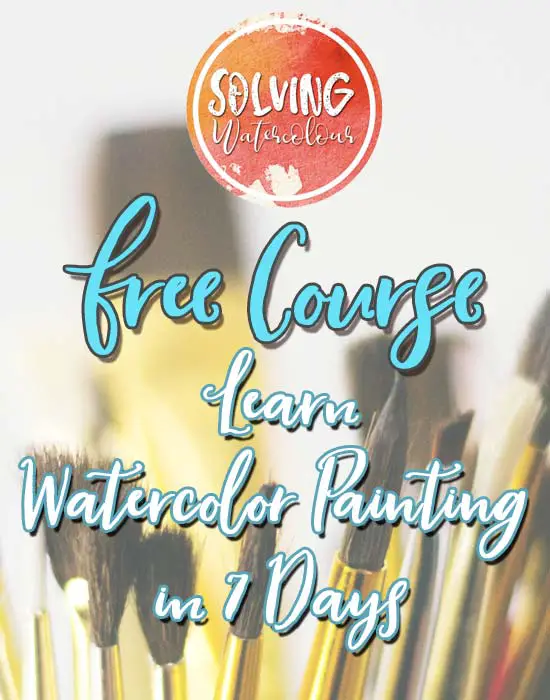
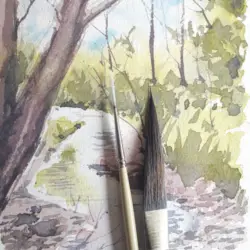
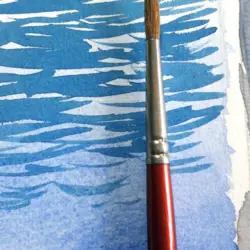
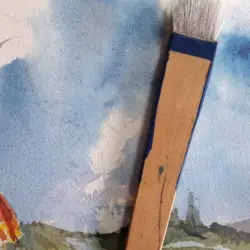
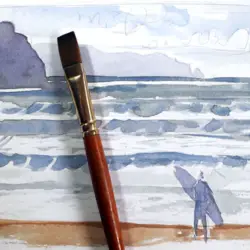
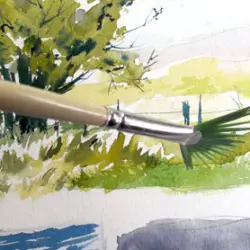
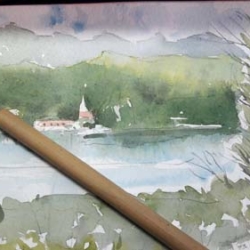
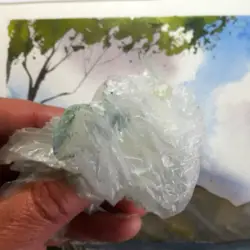
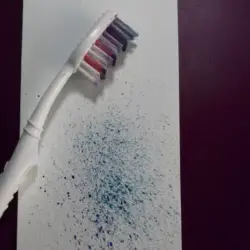
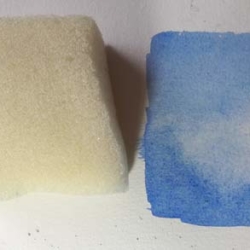

Wow! I’ve always wondered if I should spend my money on a Kolinsky and I REALLY appreciate your honesty. I too am under the impression that spending money on quality paper is way more important than the expensive brush. So, really glad you think that, as someone who actually owns expensive brushes. (I don’t – I use expensive paper and expensive paints but only have really cheap brushes).
You and I are very different stylistically. I use my spotter brush all the time. But my thing is pinups.
I’ll be reading a lot more of your blog. Really glad I found you on Pinterest!
Thanks. This can become a really expensive hobby if you’re not careful!